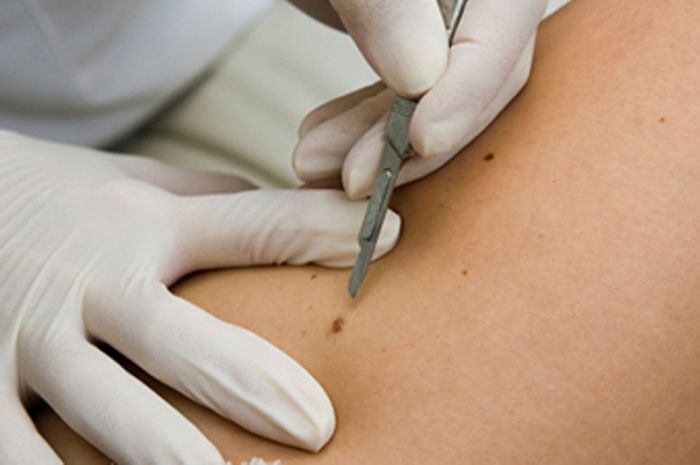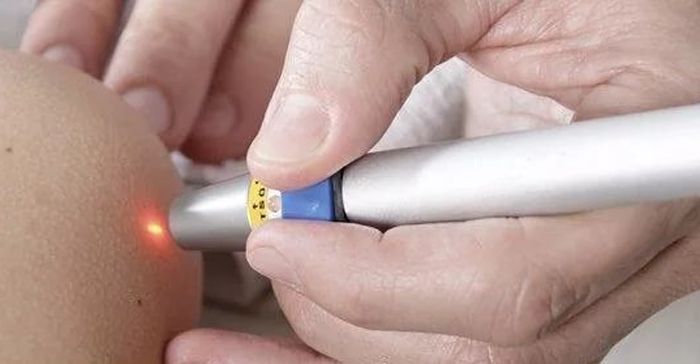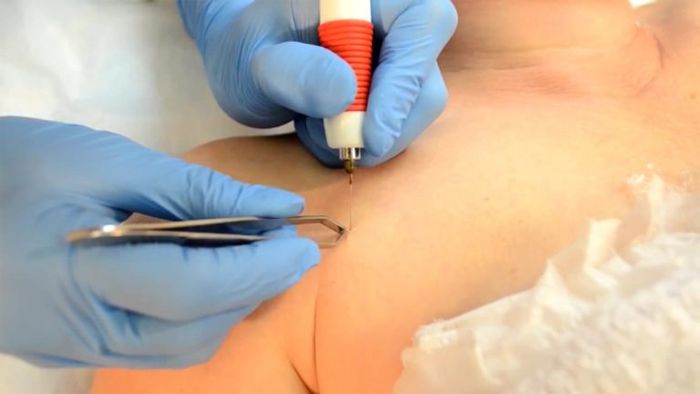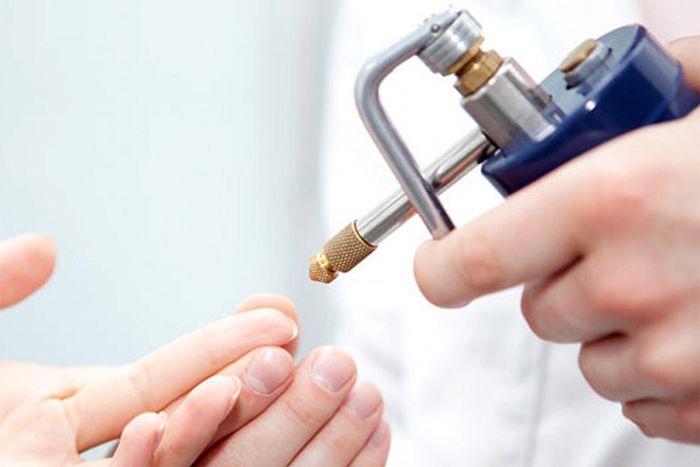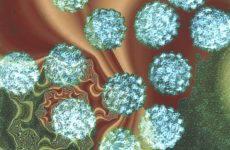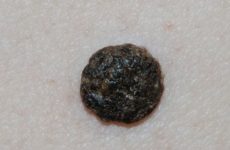To answer the question of what papillomas appear from, you need to have additional knowledge about the etiology, morphology, and viral structure of microbes that are unusual for our body.
In short, growths of various forms appear on the body in any place, large or very small, dense or soft. If the build-up is single, then often people think that since he himself appeared, then he himself will leave. Sometimes this turns out to be true.
But why he left, not everyone knows. And if the rashes continue, increase, capturing new places of localization, then a caring person will still find time to visit a doctor who will tell a lot of new and interesting things about such a small misfortune.
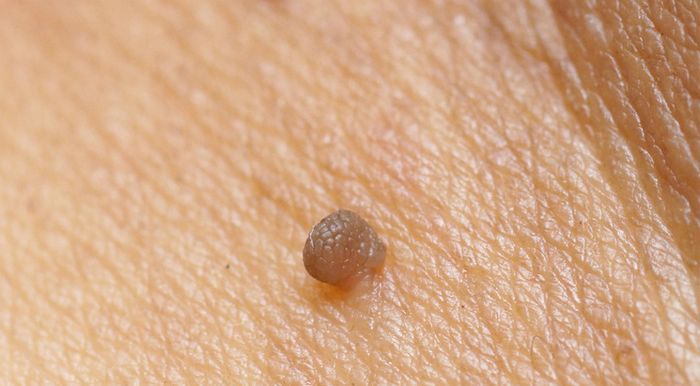
Содержание:
A little about viruses
General knowledge that almost all adults have is mainly SARS and influenza. Some had to deal with the name herpes. Many people know about the terrible disease of HIV. Common in such names is the word virus. Unlike microbes, bacteria, the virus, it turns out, does not have its own cell.
It exists at the expense of the host cell, incorporating its DNA into the structure of a healthy cell, but it has vessels for its nutrition. Quietly lives in the body, waiting for the right moment to activate. Therefore, they say that there are no effective drugs against the virus. But the means to destroy his DNA do exist, and are constantly being developed by the doctors of the world.
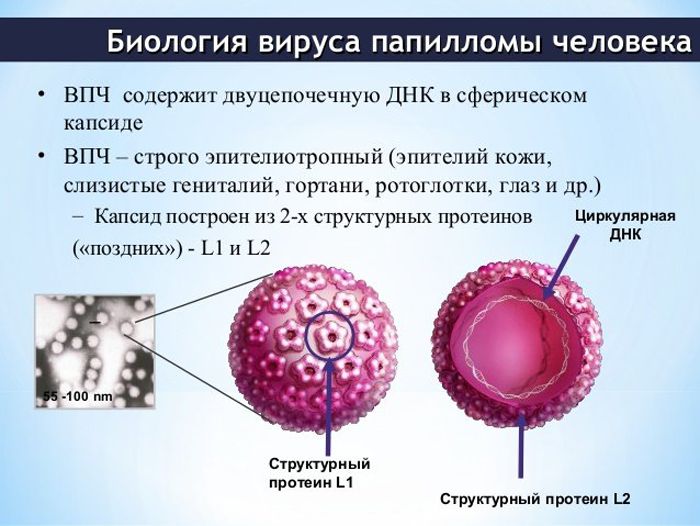
Viral etiology of papillomas
Many would be surprised to know that the resulting papilloma on the skin was caused by a virus. The root cause of why papillomas appear on the body is the penetration of the papillomatosis virus into the body.
The class of these viruses has its own name human papillomavirus (HPV). There are about 100 types of such viruses. A rich number of types needs grouping and classification. Their main classification involves grouping according to the harmfulness of viruses and has its own numerical numbering:
- Her leading to oncology is HPV 1, 2, 3, 4, 5, 10, 28, 49.
- Low oncogenic nature, i.e. rarely mutating into oncology: HPV 6 , 11, 13, 32, 34, 40, 41, 42, 43, 44 , 51 , 72.
- Average cancer risk: HPV 26, 30, 35, 52, 53 , 56, 58 , 65.
- High risk of degeneration into oncology: HPV 16 , 18, 31, 33, 39 , 45, 50, 59 , 61, 62, 64, 68, 70, 73.
Types of papilloma
The viral nature of papilloma suggests the penetration of infection into the cell of the body. Being in it, the disease can be asymptomatic for a long time. But even better if papillomas appeared. At the very least, this makes it possible to immediately try to diagnose it and start treatment earlier.
In fact, papilloma is a benign growth that forms anywhere on the body. But even the place where it can occur indicates the type of virus stamp. Each stamp has favorite places of localization. So, papilloma appeared at the site of penetration of the virus in case of its activation. This is how it happens by nature.
Papillomas appear both as papillary formations and as small rashes that protrude above the level of the epithelium, having 3 pathohistological types:
- acanthosis, which occurs as a thickening of 5 layers of the epidermis;
- hyperkeratosis, manifested in the thickening of the stratum corneum of the epidermis;
- papillomatosis as the formation of outgrowths of the skin of the upper layer of the skin in the epidermis.
The epidermis is a barrier function of the skin in the form of 5 layers on the path of infection. The forms of papilloma are different: on thin or short legs, rarely on a wide base. In structure, it has vessels and connective tissue, which are covered with epithelium.
There is a class of age-related papilloma. They are non-viral in nature, filamentous in shape, are called kerato-papilloma. Having figured out, as a result of which papillomas appear on the body, we will consider the causes of infection and activation of viruses.
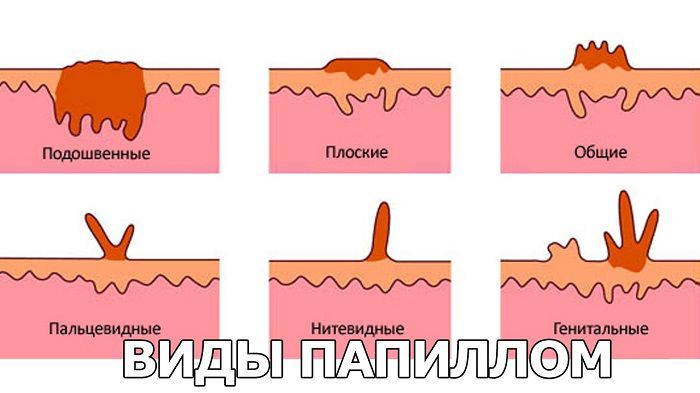
Causes of virus infection
Each infection is looking for a way to enter the body. So HPV is looking for its gates to appear in the cell. But it is not so easy for a virus to take root in the body. Our immune system is on guard. Its well-established protective function will squash the infection without giving it an opportunity for introduction.
But if the flow of viruses is abundant, then immunity can fail. The slightest manifestation of its decrease will give the virus a chance to infiltrate at the site of penetration. There should be some microtraumas, abrasions, abrasions in this place. And there is the possibility of penetration, having met with the carrier of the infection.
Almost always it is a meeting with an infected person. Less often by domestic means or in health complexes. Since papillomas can appear on any part of the body, and, much to our chagrin, on the internal organs, the causes of infection include:
- sexual contacts of unprotected sex, especially with frequent change of partners;
- newborns can become infected during childbirth;
- household infection in public places through injuries on the body;
- the possibility of self-infection, this also applies to non-compliance with hygiene rules. For example, people who have a habit of biting their nails can catch the virus.
In addition to the enlarged groups of reasons, there is still a variety of factors why papillomas appear:
- abuse of bad habits: smoking, alcohol;
- the use of hormonal contraceptives by women;
- long-term use of drugs aimed at curing other diseases;
- often in the younger generation, the virus is activated after severe stress;
- The virus likes to take root in damp places, and upon contact with an injured area of \u200b\u200bthe skin, it can enter the body. In the summer it is the beaches.
Under the influence of one of these factors, the infection is activated, and the disease enters the clinical phase, which explains why growths grow on the body.
According to particularly unverified data from various authors dealing with HPV problems, there are statistics:
- papillomatosis clinically, i.e., being in the active phase, are formed only in patients up to 5% of all infected;
- up to 90% of patients have the ability to get rid of the infection by self-healing. At least it’s not defined.
- diagnostic known methods;
- the remaining cases fall on long-term recurrent processes, giving all sorts of complications.
Such statistics of papillomas would please with the opportunity of how to get rid of them.
Treatment methods
Once there is a disease, then the keys to its treatment are selected. What to do and how to get rid of a malicious virus? First of all, you need to pay attention to self-healing from the virus. Where did this all of a sudden come from?
The fastest answer will be to strengthen your immunity, which was able to suppress the virus until it completely disappears. Therefore, it is important in the treatment of supporting immunity in all possible ways:
- Natural way of vitaminization and mineralization of the body. If necessary, immunologists will select vitamin complexes.
- Reception of immunomodulators that can activate the body’s defense processes.
- The use of immunostimulants that contribute to the normalization of the immune system.
- They are treated with immune preparations only as prescribed by a doctor.
Papillomas appear in both sexes. In men, growths on the skin of the neck are more common than in women. The specifics of wearing clothes, often injuries to the neck come from shirt collars. If the papilloma has grown in a place where you can often injure, then it is better to treat it than to wait until it disappears on its own.
Permanent injury will lead to virus multiplication and frequent rashes or colony growth that will take a long time to fight. The treatment uses an integrated approach. Its essence is in taking antiviral drugs, which, after a thorough diagnosis, are selected according to a certain type of stamp.
In addition to these methods, a method for removing the external manifestation of formations is selected. The method must also be selected with high efficiency. If all virus-infected tissue is removed, then relapses of the rash are excluded.
Removal can be done by pharmacy or hardware in medical institutions. There are also folk remedies for the treatment of papilloma. But having at hand the richest selection of medicines that do not cease to appear in pharmacies with new ingredients, it is better to use them.
